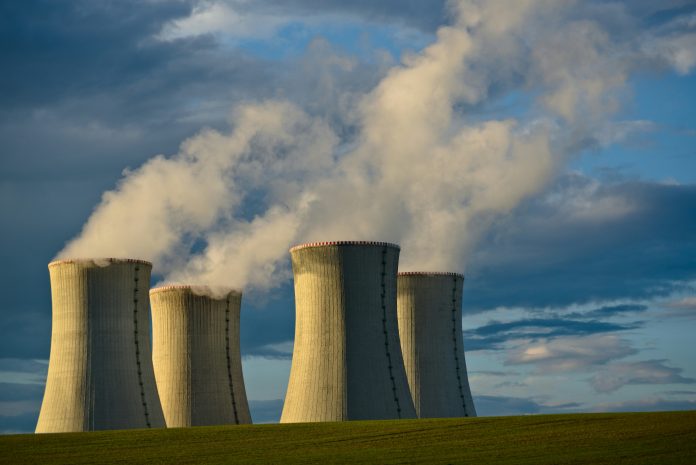The green energy industry is developing advanced inspection technologies to keep workers safe. Learning about the tools strengthening nuclear plant safety and their continuing evolution will clarify how those plants can remain structurally sound as the energy source becomes more widespread globally.
Protocols aren’t the only measures enhancing daily nuclear plant safety. Experts also rely on evolving technologies to get the most accurate data for advanced decision-making processes.
Learning more about the technology that keeps those plants secure is crucial as the world expands nuclear energy use for sustainable electricity and data centre power.
Inspection technologies improving nuclear safety
Routine assessments at nuclear plants can present some risks for the people involved. Advanced equipment could reduce that danger while improving results.
Industry leaders are looking into the latest tech developments to improve safety, daily operations and ongoing efficiency rates.
Ultrasonic testing
Ultrasonic testing equipment makes it easier to check inside nuclear energy machinery. The procedure has been standard for decades because it accurately finds internal defects without harming exterior materials. When the tool sends pulse waves through in-service equipment, the frequency bounces off internal parts to create visual readings. Inspectors analyse hardware’s structural integrity while minimising their radiation risk and keeping the equipment intact.
Automated UT can provide more accurate readings than manual inspections. Phased array ultrasonic testing inspects reactor components for cracked welding with fewer in-person procedures close to the radiation. Time-of-flight diffraction tools create the same results while ensuring critical piping is secure. UT technology makes plants safer for everyone involved, especially those conducting the tests.
Remote visual inspection
Some technologies allow nuclear engineers to remain even farther from radiated equipment. Remote visual inspection measures let teams catch degradation, anomalies or potential issues that may result in costly repairs. When nuclear plant hardware works as intended, everyone working there remains as safe because the equipment aligns with regulatory requirements.
RVI devices come in numerous forms that continuously adapt to tech advancements. Remotely operated vehicles have photogrammetry tools that work well underwater. The technology creates 2D and 3D replicas of surrounding structures, giving teams a real-time image of issues like blockages or corrosion. Software programmes can zoom in on tiny problems the human eye might not catch but are easier to see in digital recreations.
Video borescopes are essential in-service inspection tools as well. They attach to flexible insertion tubes to inspect inaccessible places like control rod housings or piping. Intense pressures, high temperatures and radiation exposure don’t damage the equipment. Plants won’t need to shut down or put anyone at risk to catch developing anomalies and strengthen the plant’s operational efficiency.
Digital radiography
Non-destructive testing also includes digital radiography tools. Engineers can get detailed images of internal components and even gas buildup with X-ray plates. The tool sends ionising electromagnetic radiation into surfaces to find developing problems that could halt the plant’s operations. DR results also provide a volumetric examination to find structural density issues.
Though DR is a vital part of in-service inspections, it’s also a developing tool. Industry leaders are creating more powerful, smaller X-ray sources that are easily transportable and fit within smaller spaces. Building on existing technology is crucial for advancing assessment capabilities, especially for high-energy X-ray tools.
Innovations industry leaders can expect
Anyone working in the nuclear industry or developing technologies for that sector can look forward to ongoing innovations making people safer on the job. Creating more efficient inspection equipment puts workers at less radiation risk and keeps production on schedule.
Artificial intelligence integration
Artificial intelligence is becoming a powerful resource for nuclear plant teams. Workers gather and analyse data to keep everyone safe while complying with regulatory requirements. AI’s ability to provide predictive maintenance recommendations assists in those goals.
The technology collects data from every in-service inspection tool available to a team. It optimises maintenance notifications as it reads through past logs and new entries. Workers can keep up with their machinery’s developing needs without worrying about potential operational issues that cause downtime.
AI also inspects fuel consumption. When an automated programme monitors fuel usage 24/7, it can provide recommendations for those in charge of plant operations. AI can track reactor performance and compare it to past readings. The instant information could help industry leaders make more rapid, accurate decisions and reduce their operational costs. They wouldn’t need to wait for in-service inspections either because they could log onto the AI database anytime.
Teams using ROVs can create simulations with AI. They input the 2D or 3D replicas into the software and add adverse real-world conditions to see potential negative outcomes. Engineers can preview what might happen to turbines and other critical components without stopping production or putting anyone in harm’s way. The results could change how often they inspect specific equipment, manage daily operations or set goals for the plant’s future.
More advanced materials
Nuclear plant safety can only improve if the advanced observation technologies can resist the harsh environment around them. Industry leaders are looking into better-performing materials to ensure those tools’ longevity. High-performance composites, like nickel-based superalloys, can withstand repeated exposure to radiation without microstructural damage.
Thermal barrier coatings over materials like zirconium alloys also make inspection technologies more robust. They prevent corrosion after underwater assessments and high-temperature usage. If additional examination tools used similar materials, their service life could expand significantly.
Compliance monitoring sensors
The robotic systems used for autonomous inspections may include more monitoring sensors in the future. If continuous monitoring occurs within nuclear plant machinery, the data collection may ensure better radiation surveillance and water quality between evaluations. When team members start their in-service inspections, they compare their results with what the sensors have picked up since their last look inside specific parts.
Adding the extra information to evaluation results helps teams stay aligned with nuclear compliance regulations. Engineers can adjust daily operations or inspection requirements according to what their equipment needs based on sensor data. If they add sensors to their assessment tools to monitor the plant and their equipment, industry leaders can track when their tools need repairs to avoid potential downtime.
Stay ahead of nuclear plant safety tech advancements
Advancing inspection technologies build on what came before them. Understanding the current tools available within the nuclear power sector can inform tech leaders about what would most help engineers with their ongoing work.
Every advancement can make plants safer and more efficient if tech developers and nuclear engineers are on the same page about modern inspection procedures.









